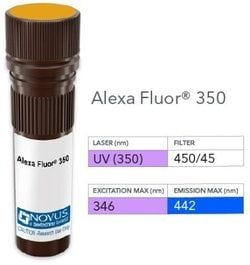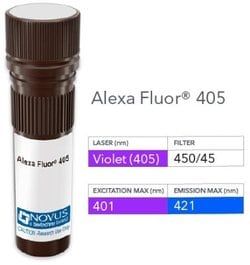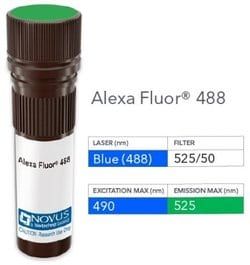Filaggrin Antibody (FLG/1563), DyLight 405, Novus Biologicals™
Manufacturer: Novus Biologicals
Select a Size
| Pack Size | SKU | Availability | Price |
|---|---|---|---|
| Each of 1 | NB009114-Each-of-1 | In Stock | ₹ 57,494.00 |
NB009114 - Each of 1
In Stock
Quantity
1
Base Price: ₹ 57,494.00
GST (18%): ₹ 10,348.92
Total Price: ₹ 67,842.92
Antigen
Filaggrin
Classification
Monoclonal
Conjugate
DyLight 405
Formulation
50mM Sodium Borate with 0.05% Sodium Azide
Gene Symbols
FLG
Immunogen
Recombinant human Filaggrin protein fragment (around aa 998-1104) (exact sequence is proprietary) (Uniprot: P20930)
Quantity
0.1 mL
Research Discipline
Cell Biology, Cellular Markers
Test Specificity
Filaggrin is an intermediate filament-associated protein that aggregates keratin intermediate filaments in mammalian epidermis. It is initially synthesized as a polyprotein precursor, profilaggrin (consisting of multiple filaggrin units of 324 aa each), which is localized in keratohyalin granules, and is subsequently proteolytically processed into individual functional filaggrin molecules. Active filaggrin is present at a level of the epidermis where keratinocytes are in transition between the live nucleated granular layer and the anucleate cornified layer, suggesting that filaggrin aids in the terminal differentiation process by facilitating apoptotic machinery.
Content And Storage
Store at 4°C in the dark.
Applications
Immunohistochemistry, Immunohistochemistry (Paraffin)
Clone
FLG/1563
Dilution
Immunohistochemistry, Immunohistochemistry-Paraffin
Gene Alias
ATOD2, epidermal filaggrin, filaggrin, Profilaggrin
Host Species
Mouse
Purification Method
Protein A or G purified
Regulatory Status
RUO
Primary or Secondary
Primary
Target Species
Human
Isotype
IgG2b κ
Description
- Filaggrin Monoclonal specifically detects Filaggrin in Human samples
- It is validated for Immunohistochemistry, Immunohistochemistry-Paraffin.



